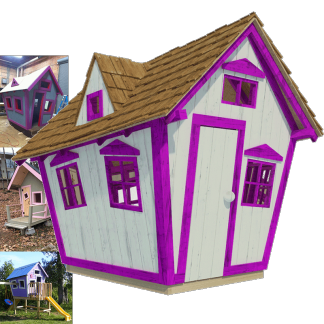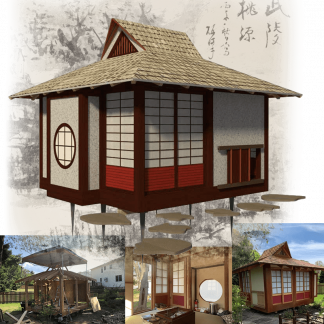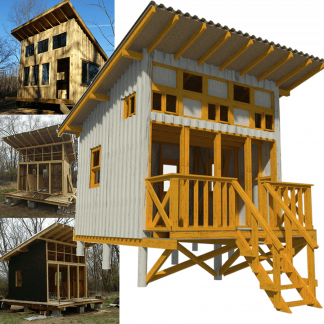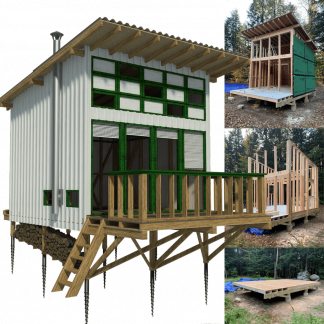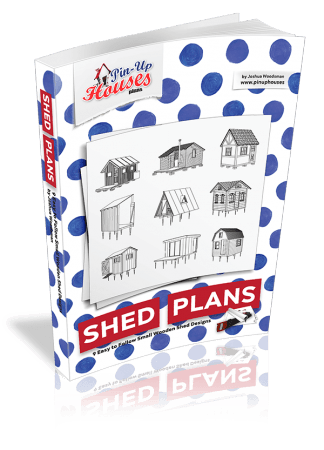Anyone who’s built or lived in a small cabin knows the challenge: you want warmth and personality, but you can’t sacrifice precious square footage to bulky decor. That’s where yarn crafts come in. Unlike heavy furniture or space-hogging decorations, handmade textile projects add layers of comfort and visual interest without eating up your limited floor plan.
The beauty of working with yarn is the sheer variety of textures and patterns available. From chunky weight yarns that work up quickly to intricate mandala yarn patterns that create stunning color shifts, there’s something for every skill level and aesthetic preference. Whether you’re a complete beginner or an experienced crafter, textile projects offer flexibility that hard goods simply can’t match.
Here are seven easy ways to use yarn projects to maximize comfort and personality in small spaces.
Wall hangings that double as art
Forget expensive paintings that need special hanging hardware. A woven wall hanging or macrame piece creates instant visual interest while adding texture to flat walls. The vertical orientation draws the eye upward, which actually makes low ceilings feel higher. Plus, if you move or want to switch things up, you just take it down. No patching nail holes or worrying about weight limits.
Basket storage that looks good
Crocheted or knitted baskets solve the eternal small-space problem: where do you put all your stuff? These soft-sided containers can hold everything from firewood by the stove to extra blankets under the bed. Unlike rigid plastic bins, yarn baskets have some give to them, so they can squeeze into odd corners and under furniture more easily.
Throw pillows you can actually afford
Store-bought throw pillows run $30-50 each, which adds up fast when you’re trying to make a futon or basic couch look inviting. Knit or crochet your own covers, and you can change them out seasonally without breaking the bank. Start with simple textures in neutral colors, then get more adventurous as your skills improve. The best part? Pillow covers take up almost no storage space when you’re rotating them out.
Blankets that define zones
In a studio or open-plan cabin, a well-placed throw blanket can help define different areas. Drape one over the back of your reading chair to create a cozy corner. Keep another folded on the arm of the couch for movie nights. The different colors and textures help your brain register these as separate spaces, even though there are no walls dividing them. Layered textiles are particularly effective in compact living situations, where soft materials help absorb sound and make rooms feel more intimate rather than cramped.
Window treatments that actually insulate
Heavy curtains are expensive and block natural light, which is a real problem when you’re working with limited windows. Crocheted cafe curtains or valances give you privacy without the weight or cost. They filter light beautifully and add an extra layer of insulation during cold months. For cabins in particular, this can make a noticeable difference in heating costs. Textile window treatments have long been essential to creating warmth in small spaces, offering both practical function and aesthetic appeal.
Ottoman covers that hide sins
Found a cheap storage ottoman at a thrift store, but the upholstery is trashed? Crochet or knit a cover for it. This works especially well with chunky yarn and simple stitches. You get a custom look for a fraction of what you’d pay retail, and if it gets dirty or worn, you can just make a new one.
Rugs for weird spaces
Standard rugs come in standard sizes, which rarely fit the odd dimensions of small cabins perfectly. Making your own lets you customize the size and shape to fit that narrow hallway or the space in front of your loft ladder. Rag rugs made from fabric strips are particularly forgiving for beginners, and they use up scraps you might already have lying around.
The real advantage of yarn projects in small spaces isn’t just about the finished product. It’s that crafting gives you something productive to do during long winter evenings when you’re cabin-bound. No special workspace required: just grab your project bag and settle in wherever you’re comfortable. And unlike woodworking or other cabin hobbies, you can easily pack up your work when guests arrive or you need the table for dinner.
Start with one simple project and build your skills from there. Your cabin will thank you for the extra warmth, and your wallet will appreciate the DIY savings. That’s the beauty of cabin living. When every inch counts, creativity becomes your most valuable tool.



